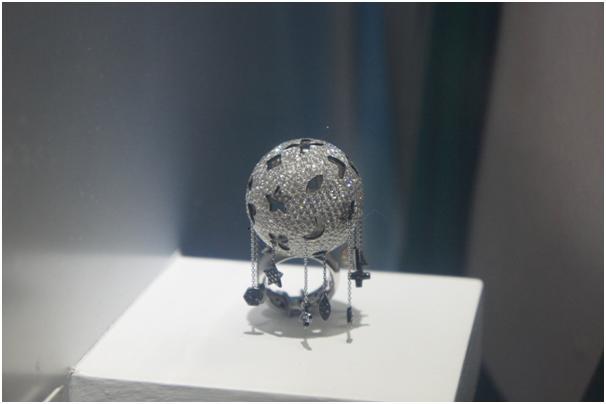Hunt Hidden Treasures at Yeosu Expo
- Date
- 2012.06.08 13:52
- Views
- 1547
- Registrar
- 관리자
Hunt Hidden Treasures at Yeosu Expo
A Host of Priceless Exhibitions, Worth Hundreds of Millions of Won
In the midst of so many things to watch and enjoy at the Yeosu Expo, there are must-see exhibitions that visitors should not miss. The Organizing Committee for Expo 2012 Yeosu Korea unveiled 7 hidden treasures of the Yeosu Expo.
□ The Belgium Pavilion – Diamond
A diamond collection “You and Me” is on display at the Belgium Pavilion. The collection features 29 diamond jewelries worth 412,263.76 euro or 600 million won.
Among them is a pair of earrings called “Life” which is the most expensive one in the collection. The 14.04-carat earrings set with 216 brilliant cut diamonds, and are worth 72,500 euro or 106 million won.
Two diamond rings named “Me Searching for You” set with 162 brilliant cut diamonds of 18.14 carats. They are worth 55,623 euro or 81 million won.
※ Brilliant Cut: one of the design guides used when shaping a diamond for polishing. The brilliant cut diamond consists of 58 facets.
□ The Lithuania Pavilion – Amber
The main theme for Lithuania exhibition is amber. Displayed amber at the Pavilion was mostly formed 15 million years ago, and a piece of amber fetches as much as $25,000 or 29 million won on average.
A lizard amber fossil, in particular, is priceless as only seven lizard amber fossils exist in the world.
The amber exhibitions are not for sale, since they are de-facto natural heritage with a long history dating back tens of millions of years.
They have just arrived in Yeosu from Lithuania Balanga National Amber Museum which had exhibited it.
□ The Italy Pavilion - Corallium Rubrum
A bright red Corallium Rubrum is a rare gorgonian coral that only inhabits the Mediterranean.
The Italy Pavilion exhibits top-rated Corallium Rubrum, often dubbed as “dove-blood” corals, that were collected and processed in Torre del Greco near Naples, Italy.
The red corals often sell for high price, as they are allowed to be harvested on a limited basis for resource protection. The usual asking price for a piece of coral displayed at the Italy Pavilion is tens of millions won. All the coral exhibitions are said to be worth more than 100 million won in total.
□ The Switzerland Pavilion - Ice core formed 15,000 years ago
Switzerland, often dubbed as the fountainhead of Europe, displays real glaciers collected at a depth of 82m of ice cap of Gnifetti-Spitze. The ice core, 3.5m in length and 8.5cm in diameter, is as old as the history of the Korean Peninsula. It is estimated to be between 1,500 years and 14,771 years old, thus waters preserved in the ice core are considered to have remained intact and pristine as what they were when humankind, a polluter, did not even exist.
It is obvious for the ice core to be of great value, judging from the facts that the ice is as old as the history of the Korean Peninsula, it gives valuable information to analyze geological features and the climate of the past, and it consists of clear and pure water.
□ OCBPA - Gliders for exploration and the Galapagos turtles
A glider for oceanographic observation displayed at OCBPA is a kind of Autonomous Underwater Vehicle, and is worth about 250 million won. It is not widely used in Korea due to high price. The Korean Government purchased three gliders from the U.S. last year and test-operated them for oceanographic observation in the East Sea. The government began to develop technologies to produce the gliders on its own this year.
The exhibited stuffed turtle, which inhabits Galápagos Islands, is also a priceless exhibition that is in danger of going extinct.
□ The Sweden Pavilion- The Nobel Prize Dinner Tableware
The Nobel Prize Dinner Tableware exhibited at the Sweden Pavilion has been used by 800 to 900 people a year since 1991. The dinnerware is used not just by Nobel Prize winners during a dinner party, but also by Sweden royal family and prime minister. While a set of the dinnerware is 10,000 in Swedish Krona or 1.63 million won, it has more value than the price as it was used by the Nobel laureates.
5-million-year-old manganese nodules at the Germany Pavilion and 10-million-won carpet at the Indonesia Pavilion are also must-see exhibitions that visitors should not miss.


